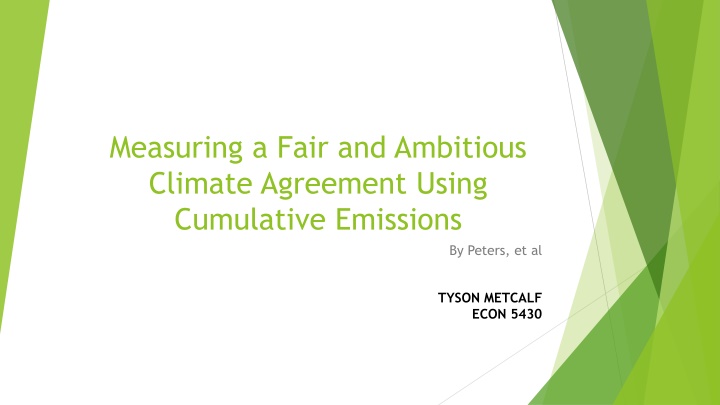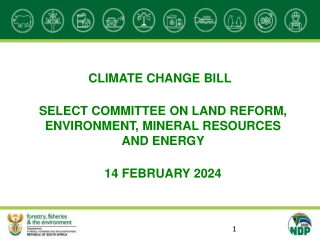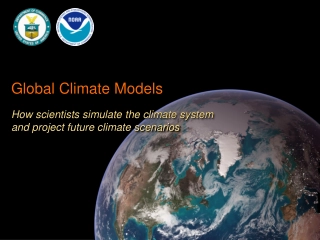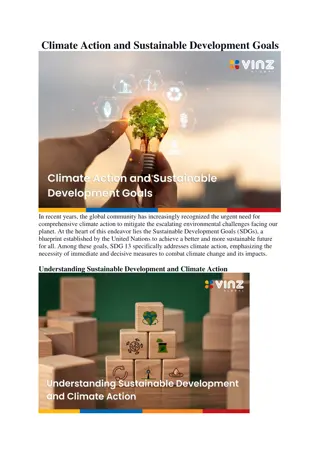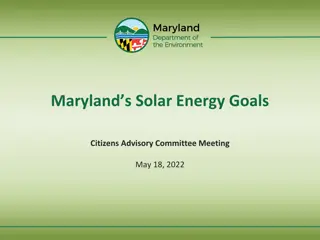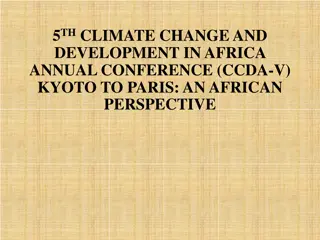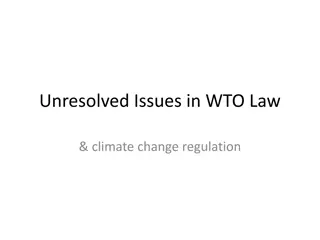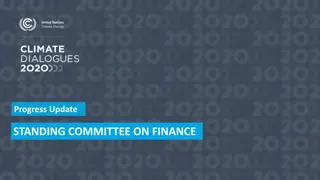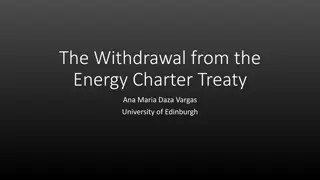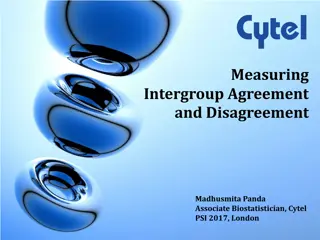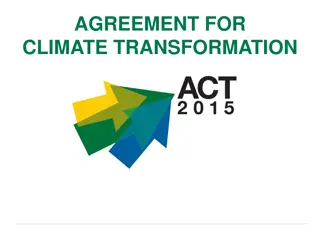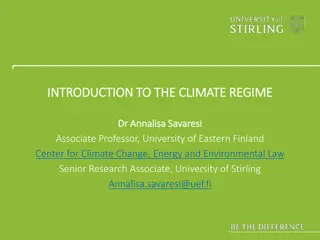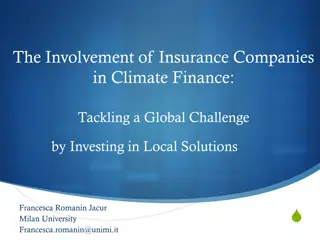Measuring a Fair and Ambitious Climate Agreement
There exists a near-linear relationship between global average temperature and cumulative carbon dioxide emissions. Policy makers aim for a fair and ambitious global climate agreement within scientific constraints to avoid exceeding a 2-degree C global warming limit. The challenge of reducing CO2 emissions requires significant global efforts and collaboration among nations, particularly from major emitters like the EU, US, and China. Various meetings and conferences have been held to address greenhouse gas stabilization, emission sharing strategies, and carbon emissions measurement methods. The focus is on achieving fairness and ambition in mitigating the global emissions crisis and transitioning towards a decarbonized economy.
Download Presentation

Please find below an Image/Link to download the presentation.
The content on the website is provided AS IS for your information and personal use only. It may not be sold, licensed, or shared on other websites without obtaining consent from the author.If you encounter any issues during the download, it is possible that the publisher has removed the file from their server.
You are allowed to download the files provided on this website for personal or commercial use, subject to the condition that they are used lawfully. All files are the property of their respective owners.
The content on the website is provided AS IS for your information and personal use only. It may not be sold, licensed, or shared on other websites without obtaining consent from the author.
E N D
Presentation Transcript
Measuring a Fair and Ambitious Climate Agreement Using Cumulative Emissions By Peters, et al TYSON METCALF ECON 5430
Global Emissions Crisis There exists a near-linear relationship between increases in global average temperature and cumulative carbon dioxide emissions (IPCC 2013) Policy makers have called for a fair and ambitious global climate agreement Scientific constraints: allowable carbon emissions to avoid exceeding a 2 degree C global warming limit The Problem? Current countries not valuing meeting mitigation challenges over nation s agendas
CO2 Emissions: Outlook The global challenge is immense, requiring a technology revolution (Hoffertetal1998, Galianaand Green 2009) and a complete decarbonization of the global economy by the second half of this century. The EU, USA, and China, for example, commit to less of a CO2 emissions target, even though these nations account for most of the world s emissions The Issue: US, EU and China are responsible for most of CO2 emissions and must enact change to face this challenge
Measuring Fairness Peters explains, We find that, combined, the EU, US, and Chinese pledges leave little room for other countries to emit CO2 if a 2 degree limit is the objective Essentially requiring all other countries to move towards per capita emissions 7 to 14 times lower than these three nations by 2030
INDCs: World Reconciliation Conference The Intended Nationally Determined Contributions (INDCs) held a meeting in Paris, France (December 2015) met in order to achieve stabilization of greenhouse gas concentrations in the atmosphere at a level that would prevent dangerous anthropogenic interference with the climate systems However, although this meeting sought a fair and ambitious reconciliation of the matter, there is no unique way to agree on the implementation of these strategies Ways of measuring carbon emissions: 1.) Sharing of emissions based on current population (equity) 2.) Sharing based on current national fractions of global emissions (inertia)
Measuring Carbon Emissions This is beneficial because the cumulative emissions concept make the task of sharing emissions significantly more tractable (WBGU 2009) The problem? It does not explicitly consider non-CO2 gases at the country level, complicating its application in climate policy The US, EU and China have already submitted their INDC s and plans to reduce carbon emission levels by 2050 Goal: to reduce emissions levels and to stay below a 2 degree increase in global average temperature. This initiative has been accepted by a broad range of countries.
Allowable Emissions Test An Allowable Emissions Test is conducted taking into account all CO2 and non-CO2 gases, historical emissions, and current emissions to come up with a current allowable emissions EQUATION: Cumulative total allowance - CO2 gas non CO2 gas historical emissions = Current Allowable Emissions How will nations share the allowable global carbon emissions?
Possible Solutions Possible solutions include: Ratio of global quota based on population Ratio of global quota based on current shares of global emissions Best Solution? A mixture of the two A greater focus on technology and political common ground in global emission matters
Takeaway From the Article: 1) technology and 2) geopolitical pledges Our analysis suggests that a critical ingredient that is missing from current negotiations is the need for a greatly increased focus on advancing research and development on low-, zero- and negative-carbon energy sources (Barrett 2009) Pledges by those countries and others toward research and development (R&D) efforts would be a unique long-term contribution to global climate goals.
